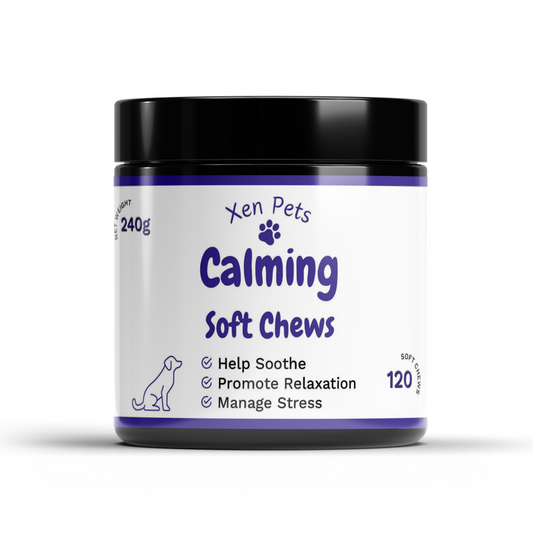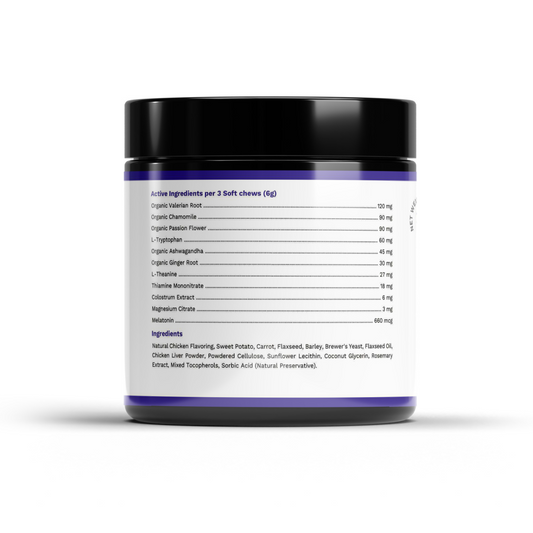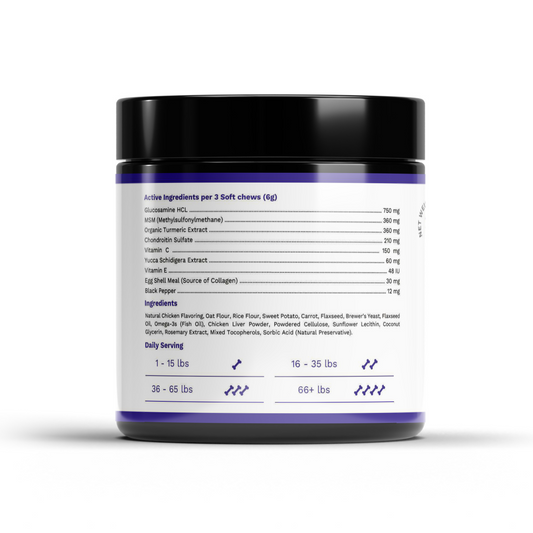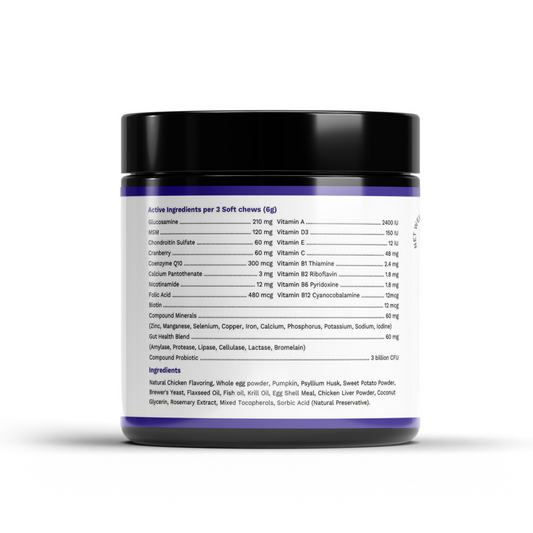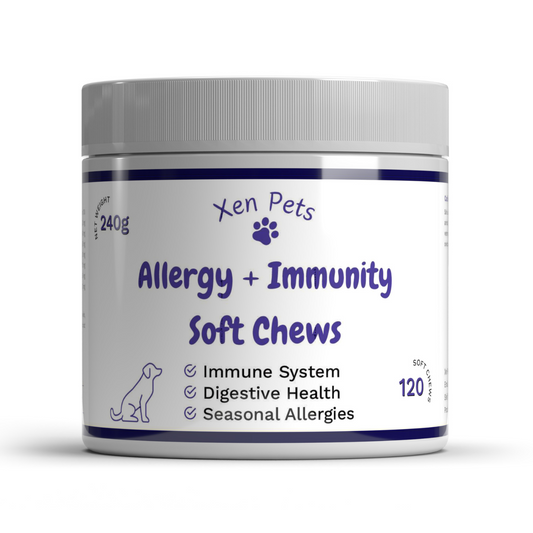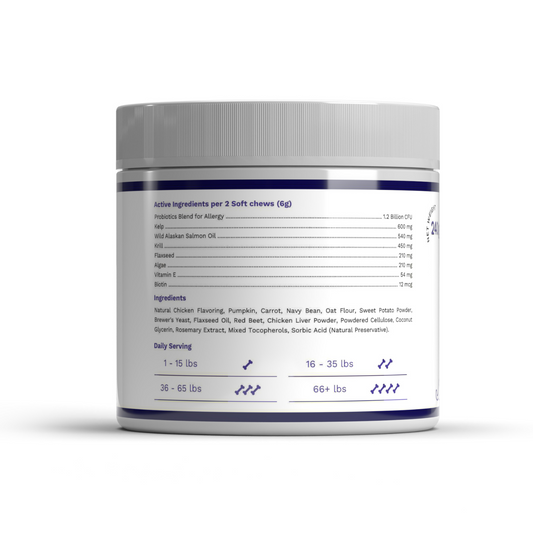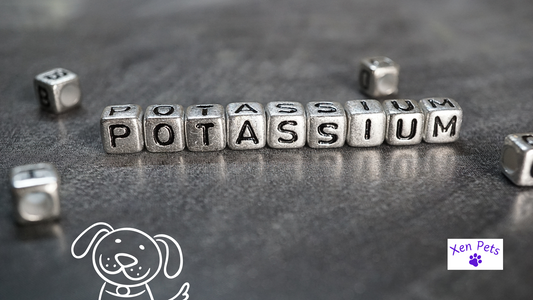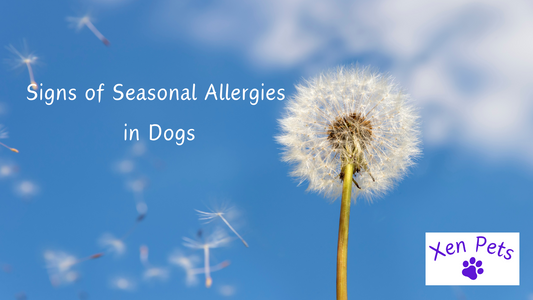Signs of Seasonal Allergies in Dogs
Tory JohnsonShare
It's not just us humans that grab a box of tissues when pollen season hits - our dogs can suffer just as much during allergy season.
When the air is filled with environmental allergens, dogs can develop a range of symptoms that call for extra care and, quite possibly, a visit to the vet.
If you have a dog with seasonal allergies, understanding the warning signs is crucial.
10 Symptoms of Seasonal Allergies in Dogs
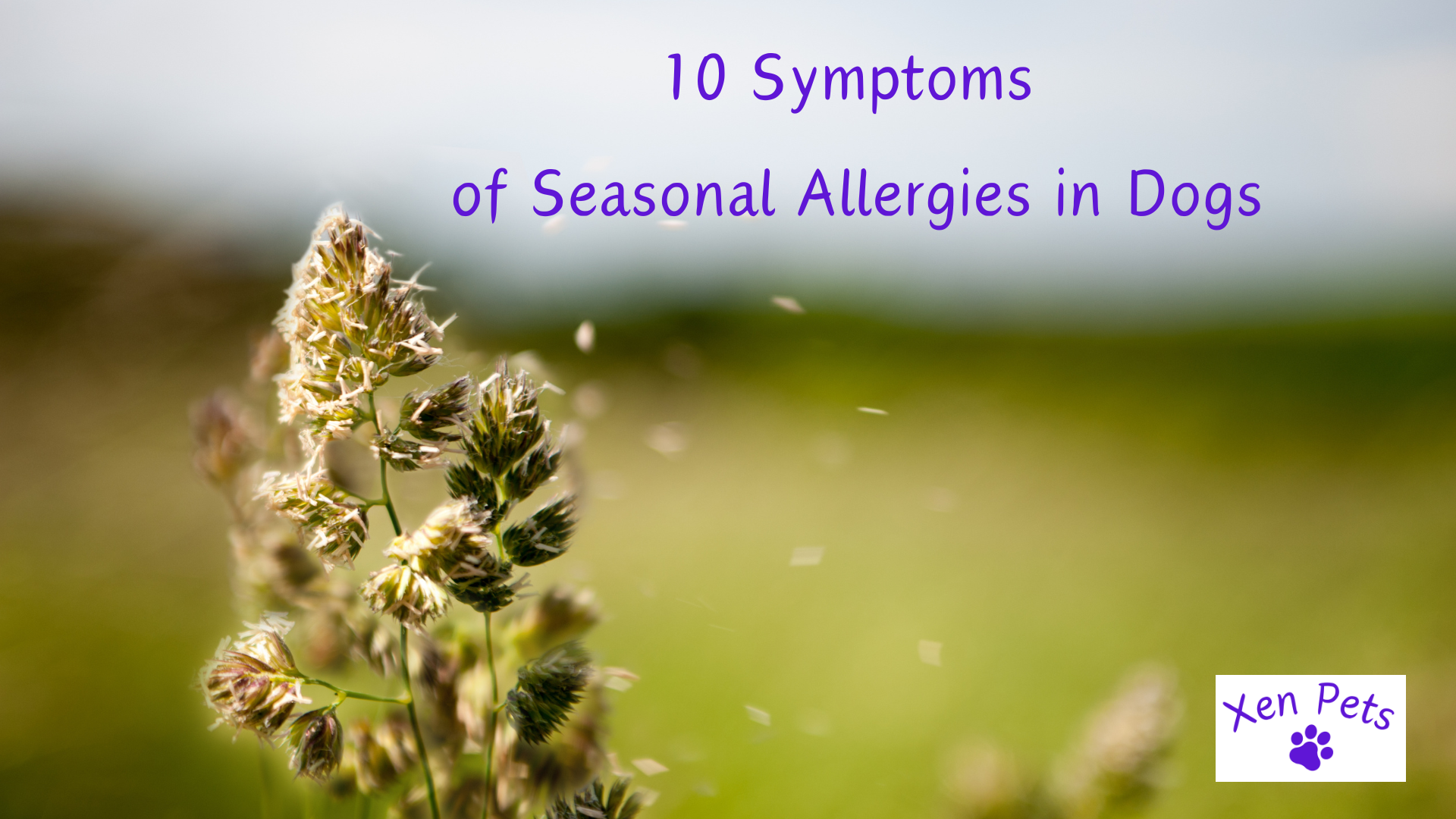
Let's take a look at 10 symptoms of allergic reactions in dogs.
As we go through these symptoms, keep in mind Allergy Chews for Dogs are an excellent dietary supplement during allergy season.
Allergy chews are made with probiotics, kelp, and wild Alaskan salmon oil to stop skin irritation and seasonal sniffles.
Daily chews can be given everyday depending on your dog's size. Shop today.
1. Excessive Scratching and Licking
When your dog seems to be itching nonstop, it could be their way of telling you something's wrong.
Dogs with seasonal allergies often show this by continuously scratching their skin, particularly in areas that are easily accessible, such as the paws, face, and underarms.
Licking can also be a comfort mechanism for irritated skin. Keep an eye on your dog's coat for hot spots (areas of moist dermatitis that emerge from over-licking), as these can be a clear sign of allergies and a need for immediate attention.
2. Red or Watery Eyes
Just like humans, dogs can develop red, watery, or even swollen eyes as a response to allergens in their environment.
This discomfort can lead to symptoms such as squinting, discharge, or sensitivity to light.
If you notice your dog rubbing their eyes frequently, it's time for closer inspection and potential consultation with a vet.
3. Sneezing and Sniffling
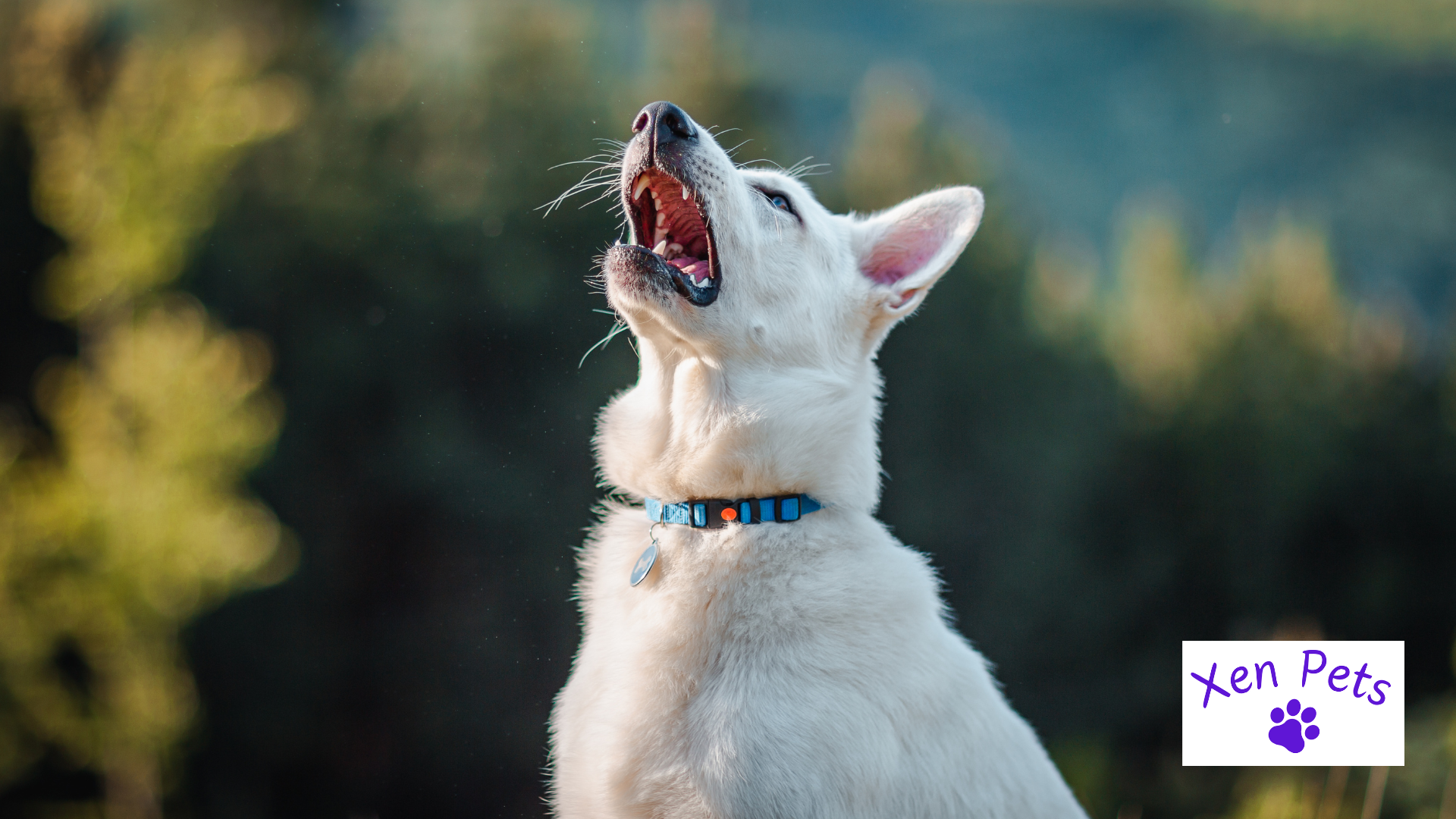
Sniffing out treats is one thing, but excessive sniffling could signal something more.
If your dog is sneezing and sniffling a lot more than usual, it could be due to irritation of the nasal passages from an allergic reaction.
Remember, dogs have a much better sense of smell than humans, so a little irritant to us could be a serious disturbance to their superior sniffer.
4. Skin Irritation or Rashes
Allergies can lead to extremely irritated and red skin.
Inflamed, itchy, and sometimes even oozing skin are common symptoms of canine seasonal allergies. Additionally, secondary skin infections can result from excessive skin irritation.
Some dogs may even lose hair or develop scaly patches, which is the perfect time for a vet visit.
5. Ear Infections
Seasonal allergies can also cause ear infections in dogs.
If your dog is constantly shaking their head, scratching at their ears, or emits a foul odor from the ear, it's likely they're experiencing discomfort.
Ear infections require prompt diagnosis and treatment from a veterinarian, as while they can have various causes, allergies are a common culprit.
6. Changes in Behavior

Has your dog’s disposition taken a turn for the mopey?
Itchy skin and other allergy symptoms can be so bothersome that it affects your pooch's personality.
Restlessness, irritability, or a general increase in anxiety could indicate discomfort stemming from allergies.
Keeping a behavior journal can help correlate these changes with environmental factors.
7. Digestive Disturbances
While we often associate allergies with sneezing and scratching, digestive issues are also a common sign in dogs.
Diarrhea, vomiting, and excessive gas can all be related to food allergies or environmental allergies.
Observing your dog's behavior around mealtimes and noting any changes can aid in narrowing down the cause of these symptoms.
8. Hives
Irritating bumps can manifest on any part of a dog's skin, though they're more noticeable in areas with less fur, such as the abdomen and underarm regions.
It's also common to observe hives on a dog's head, face, or along the legs.
In response to allergens like pollen, dogs might experience intermittent flare-ups, with raised patches of skin or hair that appear abruptly in various spots.
In some cases, affected dogs can exhibit these prominent welts for extended periods, lasting days or even weeks.
9. Sensitive Skin
Sensitive skin in dogs can manifest as a noticeable shiver or quiver when touched, often a reaction to allergies causing skin discomfort and inflammation.
While it’s normal for dogs to enjoy affectionate petting and scratches, if your dog is showing these behaviors coupled with an increased eagerness for back rubs, it's possible they're experiencing allergies.
Should you observe any of these indicators, or if your dog demonstrates a mix of these symptoms, it’s prudent to take them to the veterinarian for an evaluation.
Seasonal patterns in these symptoms — peaking during spring and summer — typically point to pollen allergies.
However, even if symptoms are present throughout the year or at various times, don't dismiss the likelihood of pollen allergies; your dog could be dealing with multiple allergies that contribute to non-seasonal skin or ear issues.
10. Hot Spots

Hot spots, also known as moist eczema, typically arise from an abundance of moisture on a specific skin area.
They're often found where pets have been nibbling at themselves, like the body flanks or near the tail.
Breeds like Golden Retrievers, German Shepherds, and Labradors are especially susceptible to these irritating lesions, which can be both painful and prone to infection for the animal.
Conclusion
Recognizing the signs of seasonal allergies in dogs is the first step towards ensuring our canine companions a comfortable life, wagging tails and all.
Remember, your dog's symptoms should not be ignored - seeking veterinary advice can provide your dog with the relief and treatment they need to enjoy the great outdoors without the itch.

